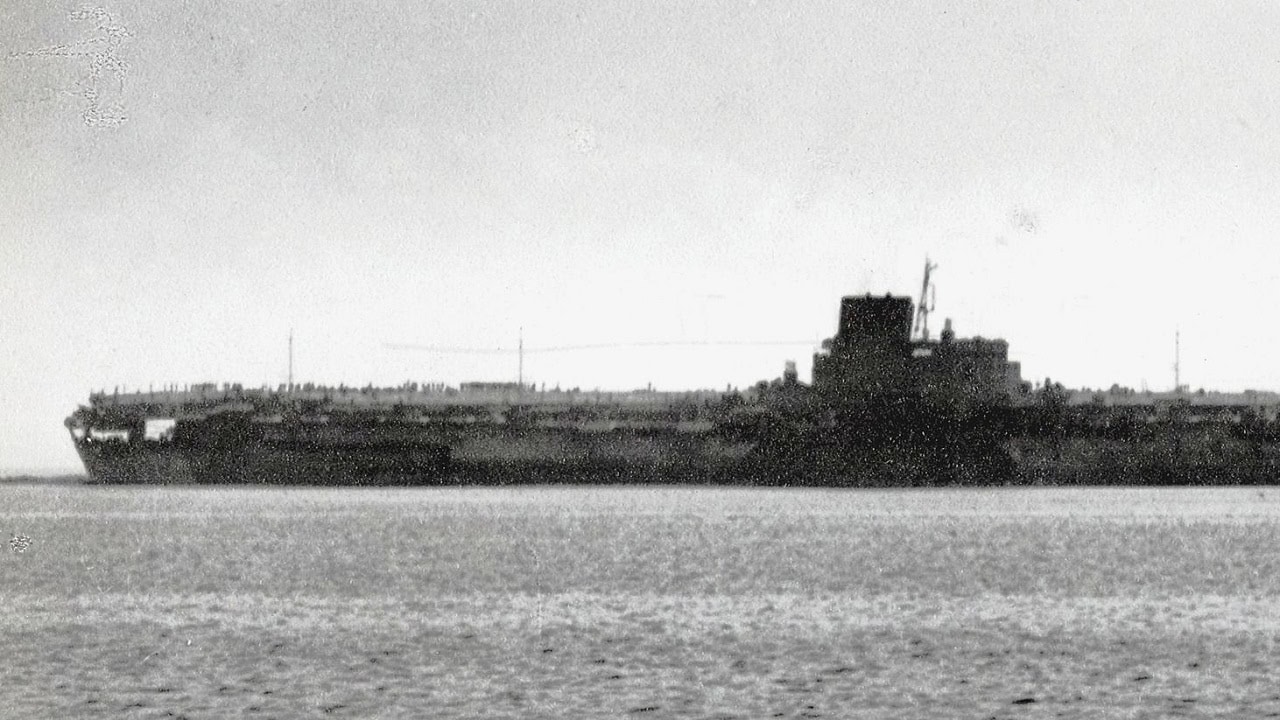Summary and Key Points: The Japanese aircraft carrier Shinano, converted from a Yamato-class battleship after Japan’s Midway losses, became the largest carrier built in World War II. Despite formidable size, heavy armor, and significant firepower, it sank only ten days after commissioning.
-Insufficient watertight compartments, incomplete sea trials, and an inexperienced crew severely limited its combat readiness. In November 1944, the USS Archerfish submarine struck Shinano with four torpedoes, causing rapid flooding.
-Post-war analyses concluded that the sinking was due primarily to inadequate damage control and poor crew training, highlighting the crucial importance of experienced sailors and thorough testing, even on powerful warships.
Why Japan’s Largest Aircraft Carrier, Shinano, Sank in Just 10 Days
On its first voyage, the U.S. submarine USS Archerfish hit Shinano with four torpedoes, causing rapid flooding. Poor damage control doomed the carrier, sinking it just ten days after commissioning.
The Japanese aircraft carrier Shinano was one of the most unique warships of the Second World War. Though initially designed as a battleship, it was eventually converted into the largest aircraft carrier of its era.
But despite its formidable size and armor protection, the Shinano’s time in service was remarkably short and relatively uneventful — the ship sank a mere ten days after it was commissioned.
The Shinano’s origin story lies with Japan’s massive, ambitious Yamato-class battleships, some of the largest battleships ever built during the Second World War. In the case of the Shinano, that ship was initially laid down in 1940.
However, following Japan’s steep carrier losses at the Battle of Midway against the United States Navy in 1942, the Imperial Japanese Navy decided to convert the Shinano into an enormous aircraft carrier to partly make up for the Midway losses.
The Shinano’s construction as a battleship was consequently stopped, and the design was adjusted to become an aircraft carrier instead.
The Shinano necessitated extensive modifications. The Shinano’s original battleship hull was retained. However, a flight deck was added to accommodate aircraft. But unlike other front-line aircraft carriers, the Shinano was not intended from the outset to be the first to fight.
Instead, its role would be as a giant support carrier. It would transport and service Japan’s naval aircraft rather than carry out extensive air operations itself. Construction delays hindered by shortages of crucial materials delayed the Shinano’s introduction into service in late 1944.
The Shinano’s flight deck and hangar were very different from earlier Japanese aircraft carrier designs. Unlike the Akagi or Kaga carriers, which had multiple flight hangar decks, the Shinano had just a single hanger.
In addition, the Shinano’s flight deck was shorter than would be expected for a ship of its large size, a reflection of the ship’s role as an aircraft transport and resupply platform instead of a combat aircraft carrier.
One of the Shinano’s more unique features was its rather heavy armor protection, a consequence of its original design as a battleship.
The Shinano retained much of the Yamato’s armor plating, including a thick armored flight deck akin to British carriers of the era, which was a break from Japanese carrier design.
It’s offensive armament was also considerable: sixteen 127mm guns and over 140 anti-aircraft guns.
The End of Shinano Aircraft Carrier
In November 1944, the Shinano left port, but crucially, it had not undergone complete sea trials. Given the late state of the war, much of the Shinano’s crew lacked adequate training and experience.
The carrier also had insufficient testing and lacked fully watertight compartments — a fact that would ultimately doom the ship.
In late November, the U.S. Navy submarine USS Archerfish saw the Shinano and launched a number of torpedos at the aircraft carrier. Four torpedoes struck the Shinano, which suffered catastrophic damage despite its battleship-level armor plating. Incomplete internal compartments meant that flooding spread rapidly throughout the ship.
Damage control was also very poorly coordinated, thanks to the green crew, and after a few hours, the Shinano capsized and sank.
Post-war, the U.S. Navy’s analysis of the Shinano’s sinking found that its loss was thanks to poor damage control rather than an outright failure of the ship’s armor.
They also found that the crew’s training was not adequate to maintain control of a damaged ship and gave credence to the belief that a survivable ship was one with a seasoned, well-trained crew.
About the Author: Caleb Larson
Caleb Larson is an American multiformat journalist based in Berlin, Germany. His work covers the intersection of conflict and society, focusing on American foreign policy and European security. He has reported from Germany, Russia, and the United States. Most recently, he covered the war in Ukraine, reporting extensively on the war’s shifting battle lines from Donbas and writing on the war’s civilian and humanitarian toll. Previously, he worked as a Defense Reporter for POLITICO Europe. You can follow his latest work on X.

